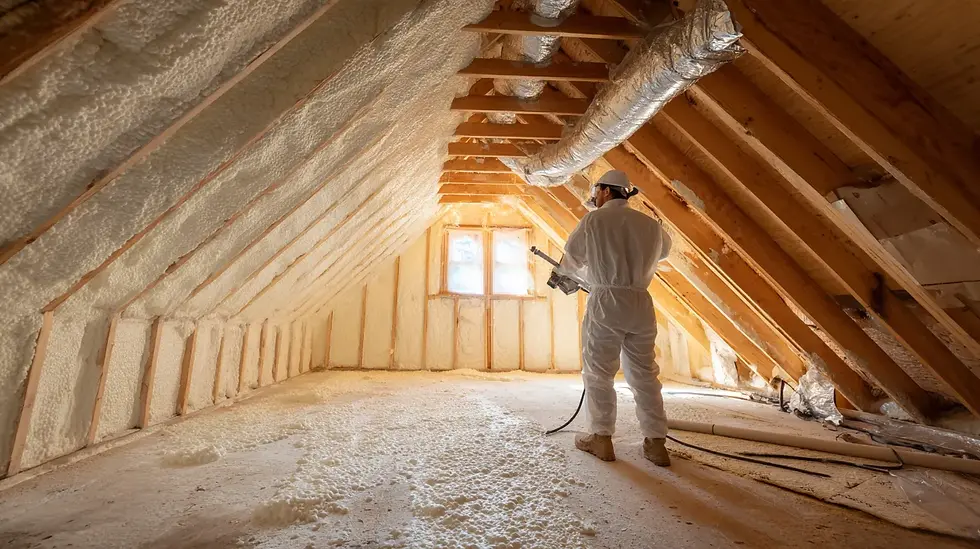How to Choose Between Single-Sided vs Double-Sided Foil Insulation?
- American Insulation

- Sep 4
- 2 min read
When it comes to keeping your home comfortable and energy-efficient, insulation plays a huge role. Foil insulation is a common option for many homeowners, but many are unsure about whether to use single-sided or double-sided foil.
Both options have their own benefits, and the best option depends on the requirements, climate, and financial constraints of your house. To help you make the best choice, we'll discuss foil insulation installation best practices, foil-faced insulation advantages, and foil insulation tips.

What Is Foil Insulation?
Foil insulation is a type of reflective insulation that uses aluminum foil to reflect heat instead of absorbing it. Because it blocks the sun's radiant heat, it helps in keeping homes cooler in hotter climates like Texas.
Additionally, it is lightweight, simple to install, and, for optimal effectiveness, works well in combination with other insulation materials.
Single-Sided Foil Insulation
Single-sided foil has reflective material on just one side,the other side is typically made of paper, foam, or another backing.
Pros of Single-Sided Foil Insulation:
More affordable than double-sided options.
Works well in spaces where only one side faces a heat source (like under a roof).
Easier to install in tight areas.
Cons of Single-Sided Foil Insulation:
Less effective when radiant heat can come from multiple directions.
May require extra layers for maximum performance.
Double-Sided Foil Insulation
Double-sided foil has reflective surfaces on both sides, meaning it can bounce heat away from either direction.
Pros of Double-Sided Foil Insulation:
Higher energy efficiency since it reflects radiant heat from both sides.
Better suited for attics, walls, and large open spaces.
Enhances indoor comfort year-round.
Cons of Double-Sided Foil Insulation:
Slightly more expensive than single-sided foil.
Installation may take a bit more planning to get the most benefit.
Foil-Faced Insulation Benefits
Whether you choose single or double-sided, foil-faced insulation benefits include:
Reduced energy bills by keeping heat where it belongs.
More consistent indoor temperatures.
Longer-lasting protection for your home.
Can work alongside traditional insulation for even better results.
Proper Insulation Techniques & Best Practices
To get the most from foil insulation, follow these proper insulation techniques and best practices for insulation installation:
Always leave an air gap next to the foil for maximum heat reflection.
Seal edges and seams to prevent air leaks.
Choose the right thickness and type of backing for your climate.
For large projects, consider professional installation to avoid mistakes.
Final Thoughts
So, how do you choose? If you’re looking for a cost-effective option for smaller projects or spaces where heat comes from just one direction, single-sided foil insulation is often enough. But if you want maximum efficiency, long-term savings, and comfort, double-sided foil insulation is usually the better choice.
With the right approach and proper installation, foil insulation can help you enjoy a more energy-efficient, comfortable home. For expert guidance and professional installation, trust American Insulation—your partner in creating smarter, safer, and more energy-efficient living spaces.





Comments